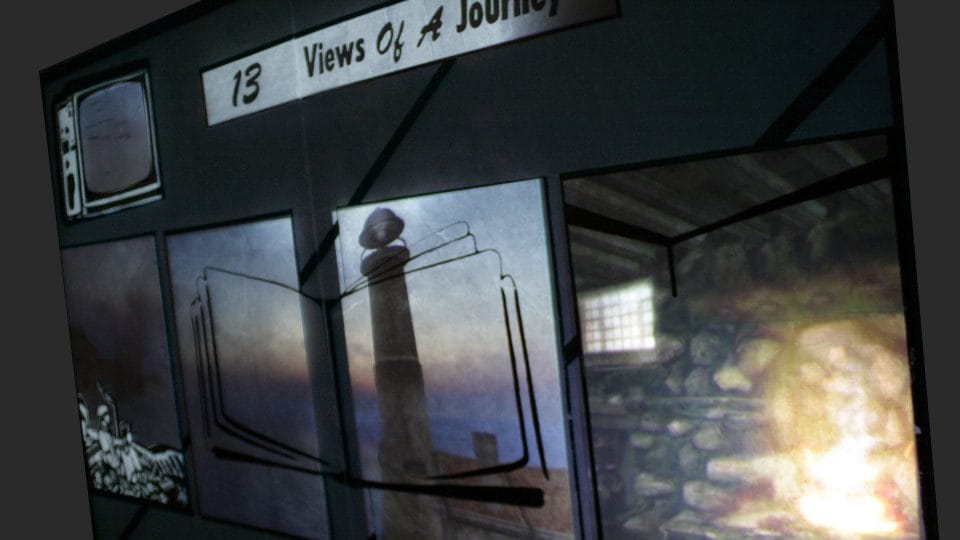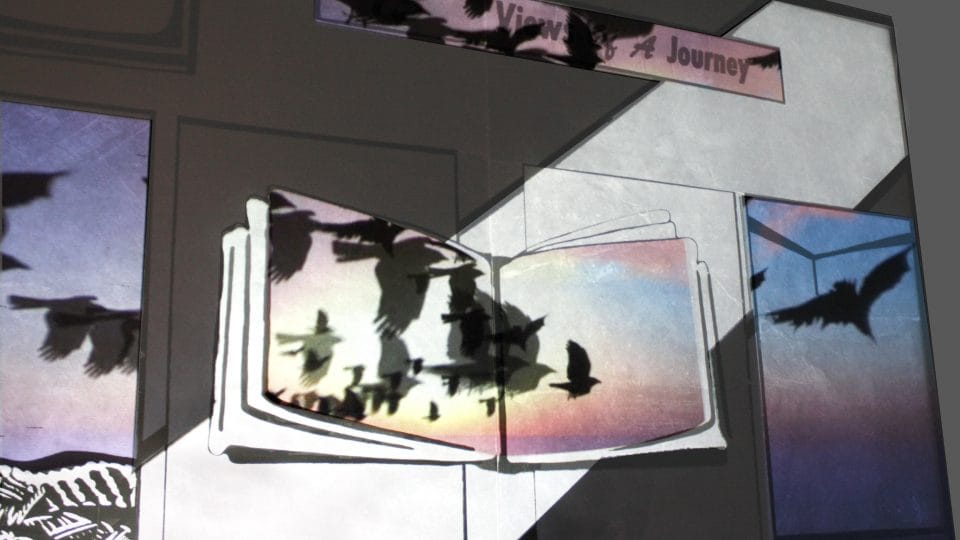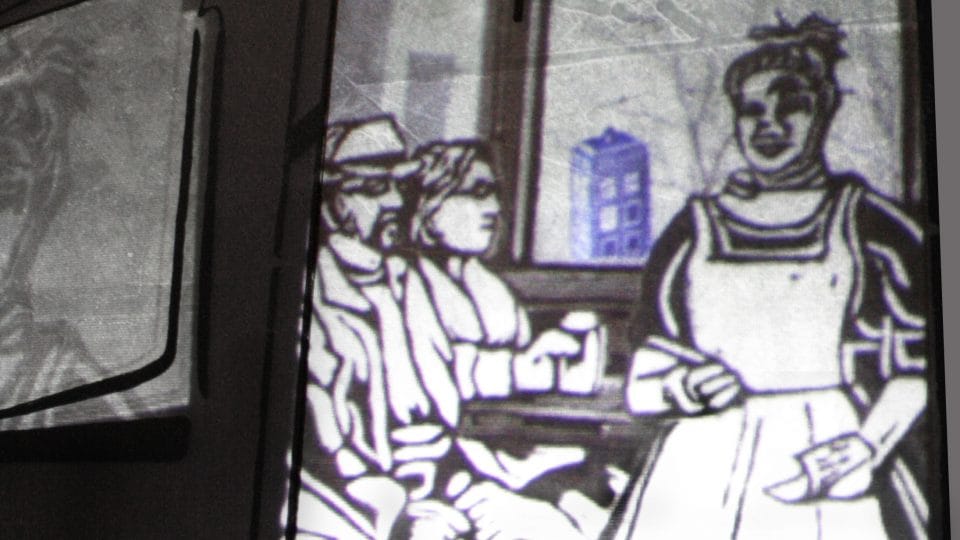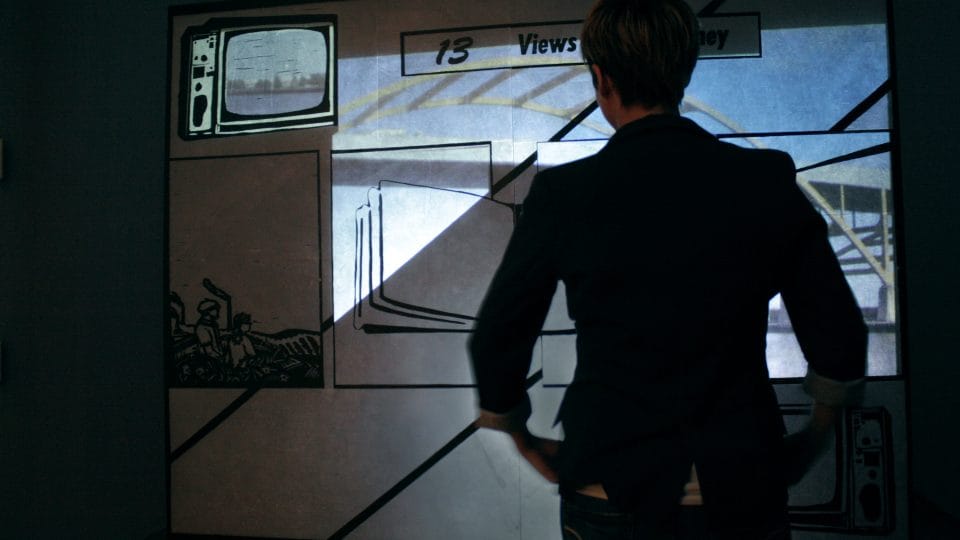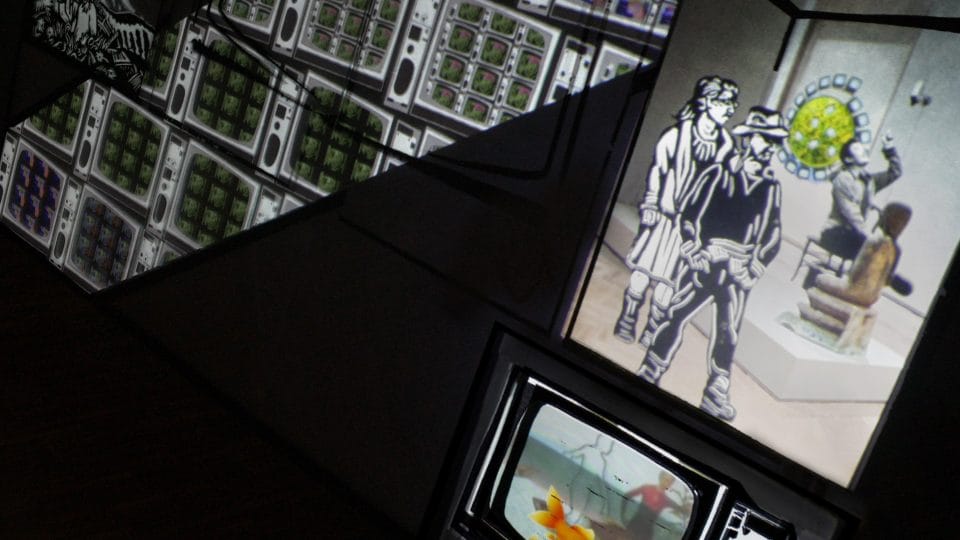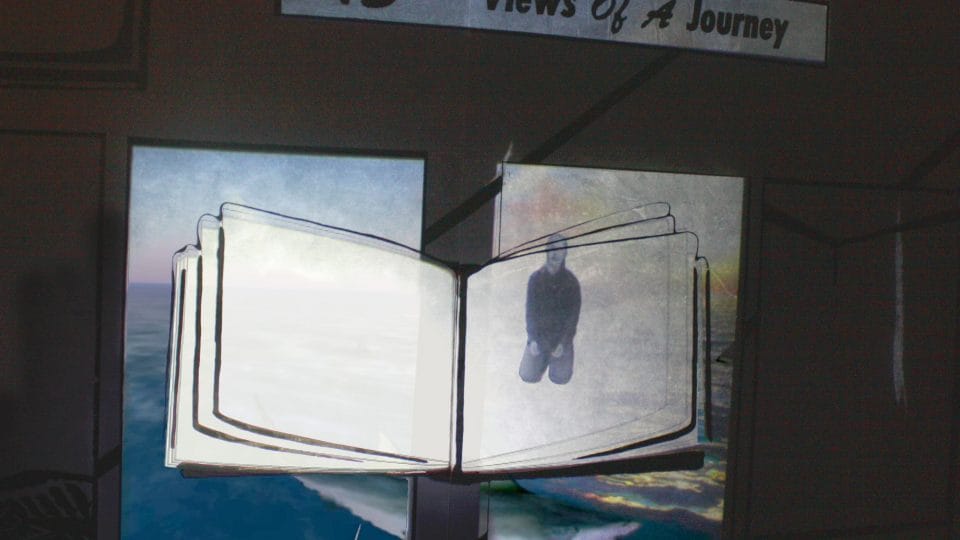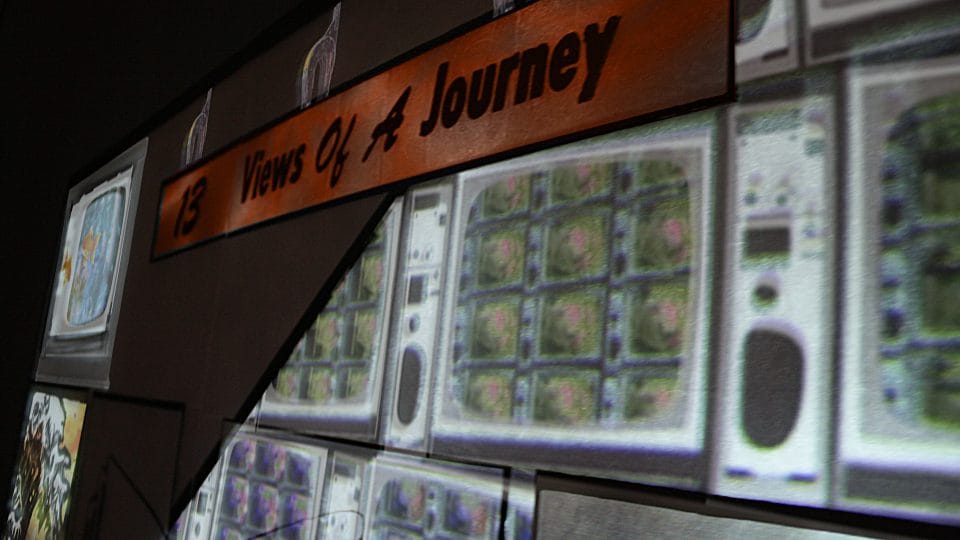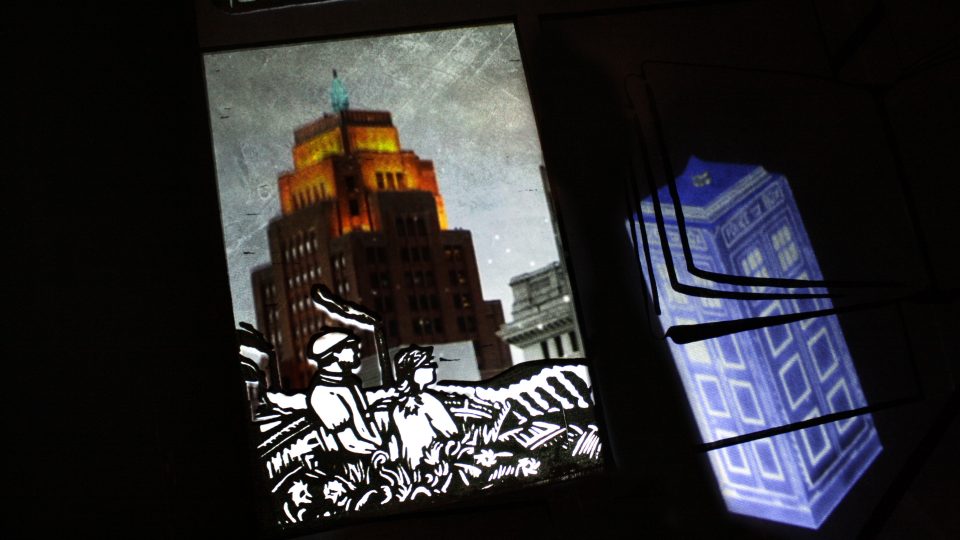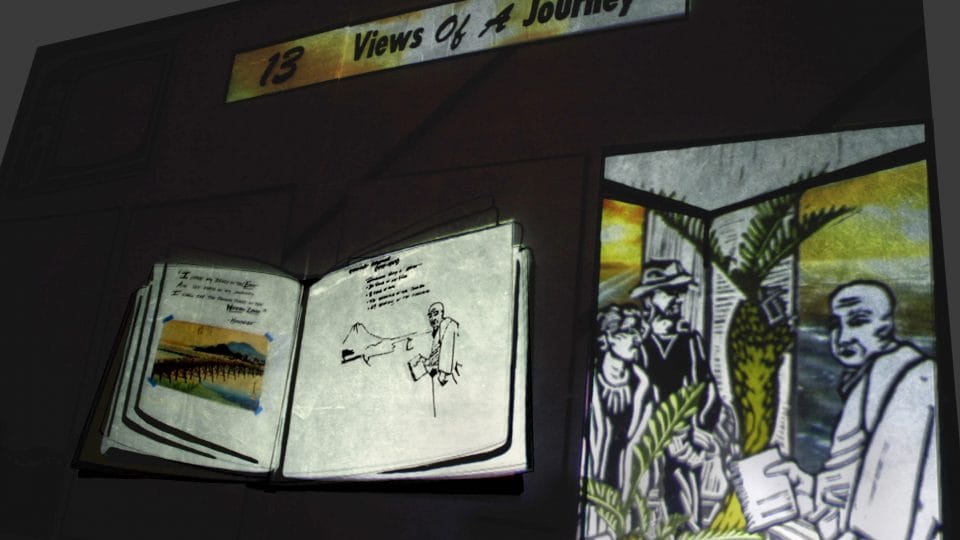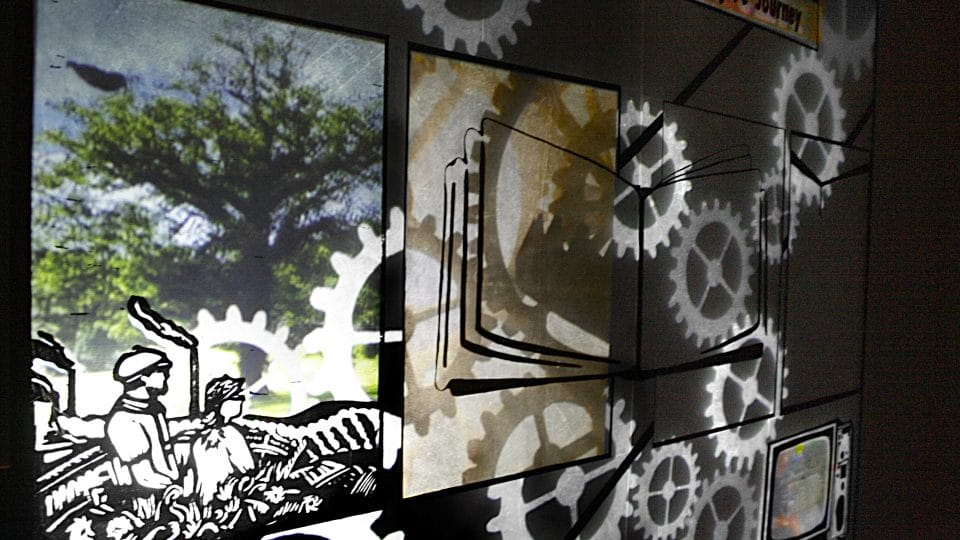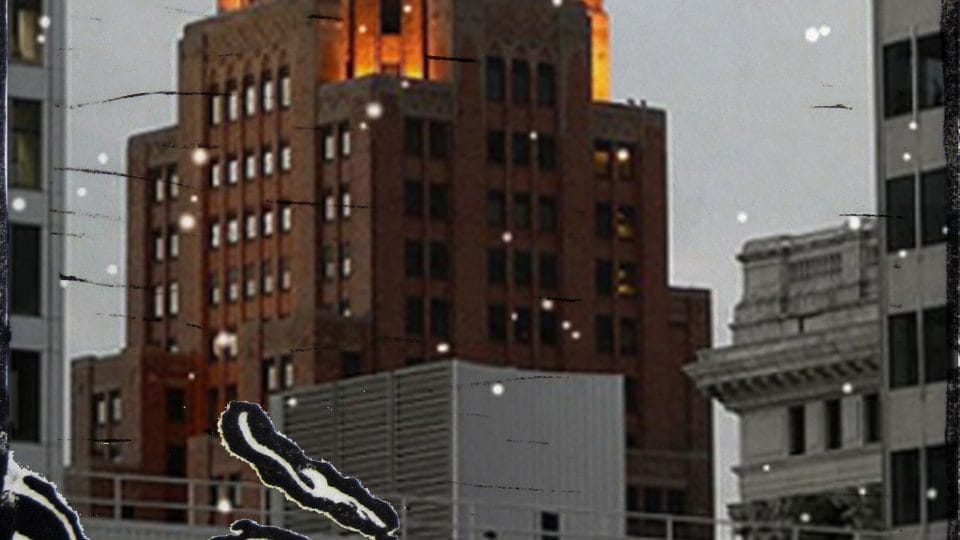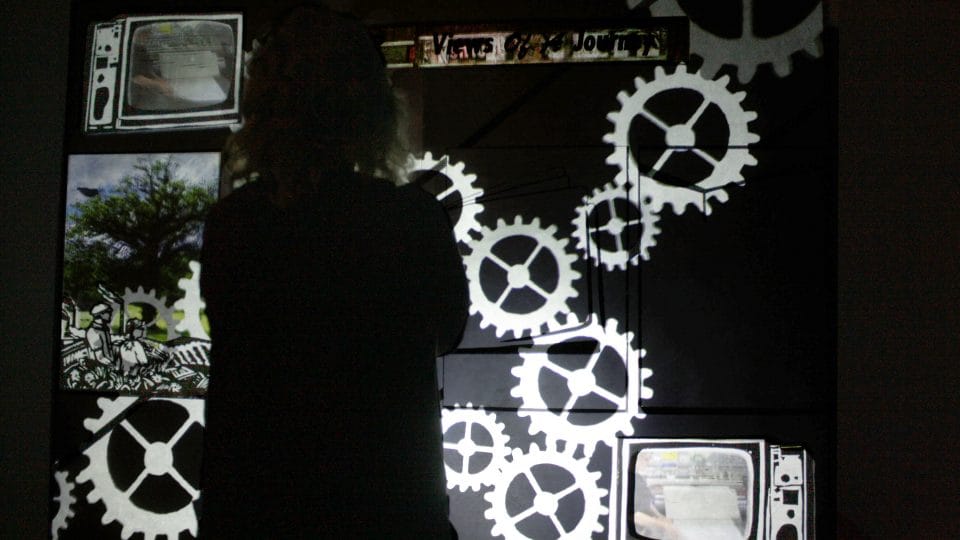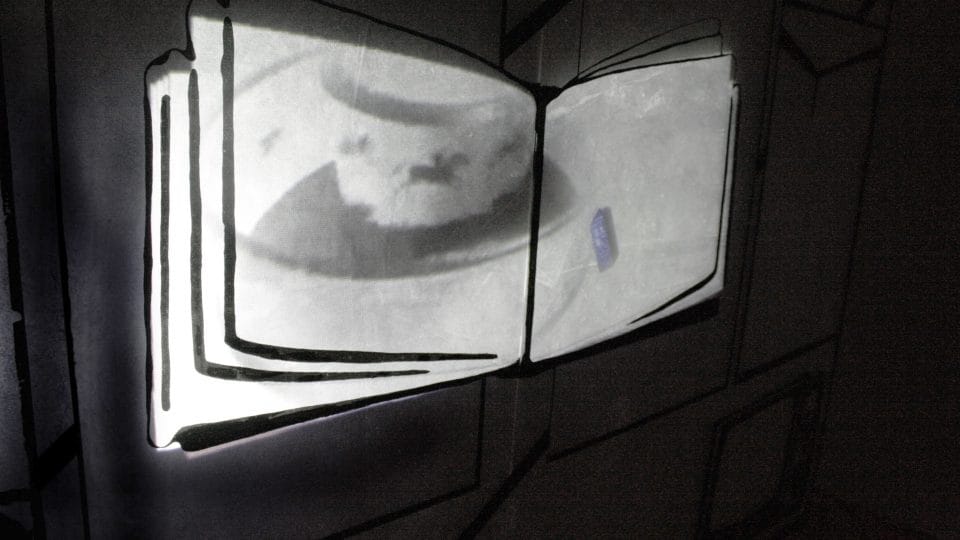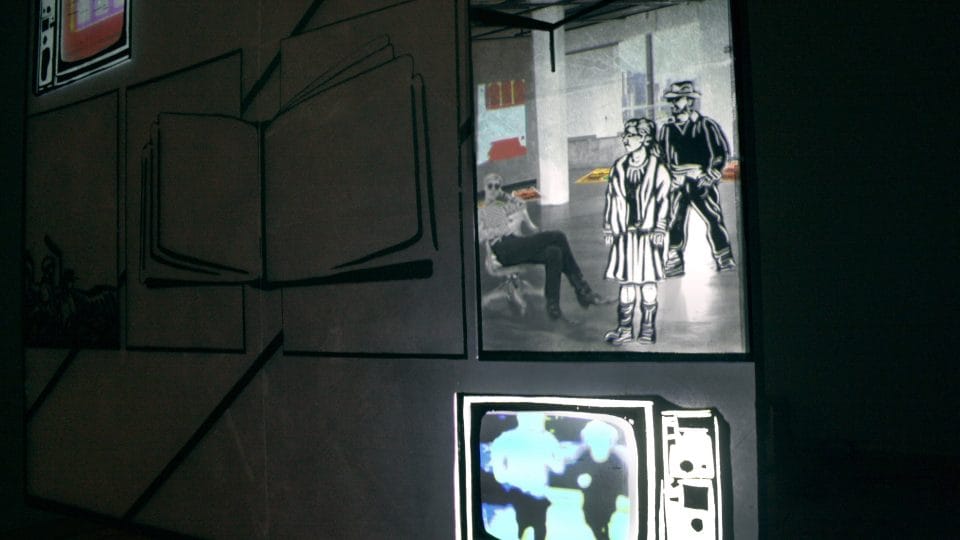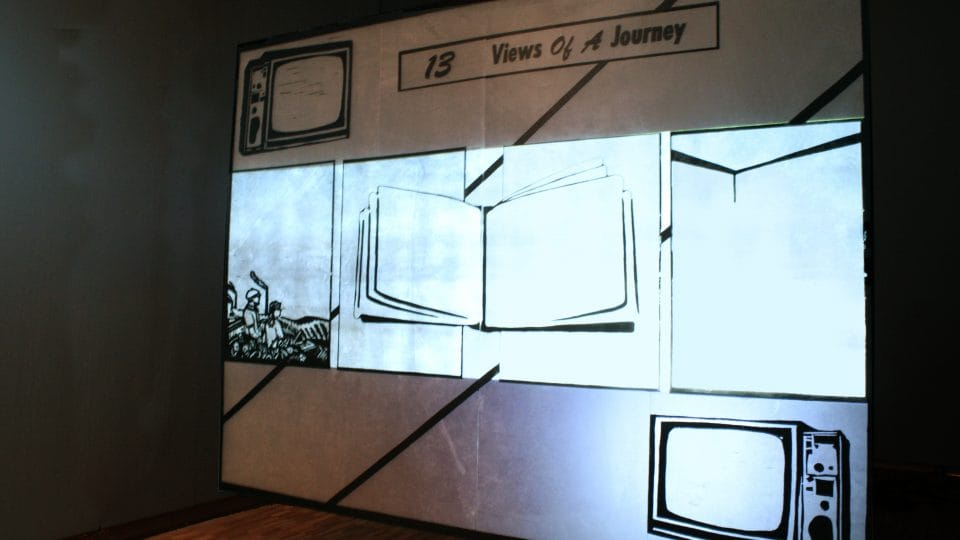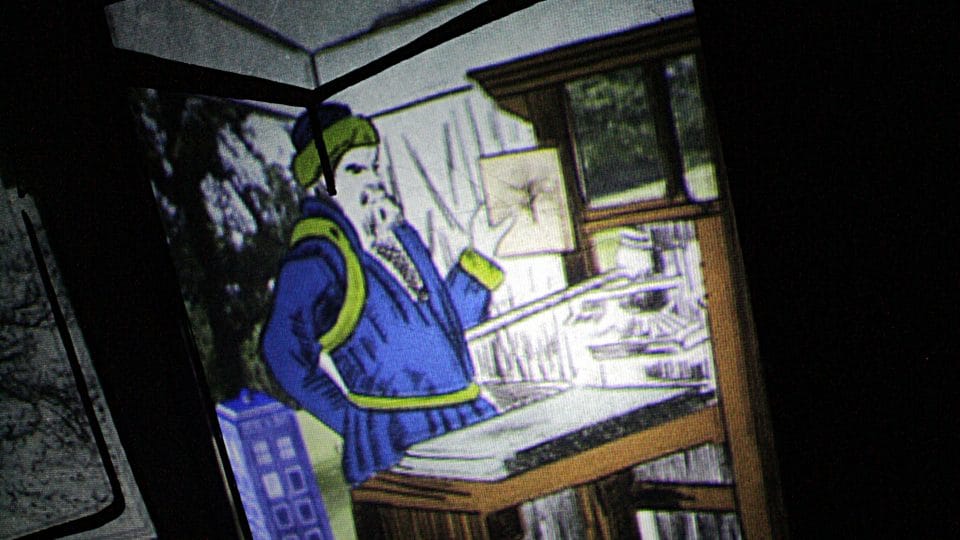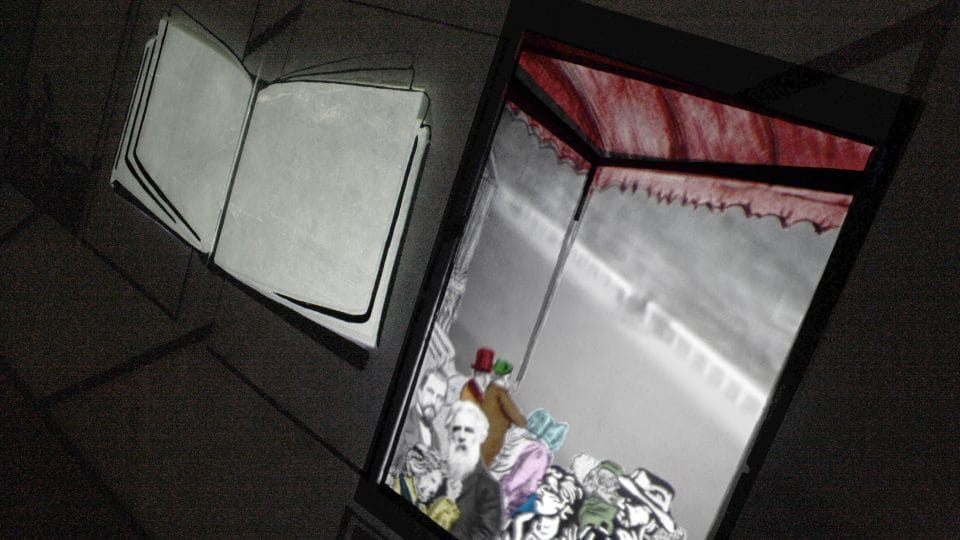13 Views of a Journey (6 x 8 feet), commissioned for the Haggerty Museum’s Current Tendencies II: Artists from Milwaukee, takes Jessica Meuninck-Ganger and Nathaniel Stern’s collaborative work to a new scale. Here the artists mount large-scale translucent prints to plexiglass and rear project video through them, creating “moving images on paper.” Their 12 animated vignettes are continuously played in random order behind fibrous and inky paper prints, making a dynamic and room-sized book art project.
Professor Melissa Shew’s catalog text:
What you see: A large installation that weaves together traditional and contemporary artistic techniques. You see etchings, video, dialogue, and artists old and new. You are disoriented – a proper feeling in our contemporary world – and you wonder: How can I really see this work of art? It impresses you immediately with its manifold expression of exuberant fervor for play -lots of play- between art and artist, past and present, what fades away and what holds. And more. You see that the work is in two halves, and from there, four quadrants. The quadrants connect in a book; the book unfolds history; and through it, time passes as the pages turn. A narrative askew, the work unfolds a metanarrative about art, about life: Informed by the past (do you note the beautiful etchings?) and desiring the future (do you see the power and potential of collaborative work here?), we continue to be displaced in the present, which flashes and fades like the dialogue you see – never totalizing, always gesturing beyond this moment. A hint here and there, a signpost for a destination always deferred.
You look closer. You see dead artists and their art, living artists and their art. You note five vignettes that loop quasi- randomly as the artists of this installation travel from time to time to visit those who have shaped their collaborative practices: Utagawa Hiroshige, whose ukiyo-e school woodblock prints and paintings demonstrate the ephemeral beauty of the everyday; Johannes Gutenberg, who changed the world with the printing press; Eadweard Muybridge, a groundbreaking photographer of human and animal movement; Andy Warhol – well, you know him; Nam June Paik, a Korean-born American video artist whose work inspires contemporary artistic media. You see examples of their art – a tribute to the artists, and you see their influence on our artists’ work – again, a tribute. Thirteen vignettes in total – these five, plus eight of the artists’ own collaborative projects.
You are kept at a distance. You step back. You consider the whole once again, and you view the journey. You understand that this installation speaks to the multilayered, prismatically dimensioned interplay between space and time. Your reflections might include the following: The past is irretrievable and the future not-yet; we are thrown into an open space that is not a space, and a time that is not a time. Like so many before us, we may long to return to our origin, or to the origin of all that is. But we know that this nostalgia signifies an impossible longing for home, an uncanny understanding of what never was in the first place – our simple belonging to the world.
Thus, we search. We realize that there is more for us to learn from this work, and we realize our error: We thought we could see it by ourselves, in isolation. You by yourself, and me by myself. Each of us alone. But it was not conceptualized by one artist, but two, and even more than two – its debt to the dead betrays the artists’ sensibilities, and suddenly, too suddenly, the cards are on the table: This work is not about the artists, past and present; it is not about correctness in terms of history or technique; it is not about influence and deference. Not exclusively, at least. Rather, this work concerns what is possible through collaboration, through layering and uncovering, film and print. And so it concerns what’s in-between – the artists and you, the art and me, you and me, ourselves and the world. We might see that what’s possible for us is found “in-between,” and that creativity springs from here and nowhere else. We look closer.
And we are invited in.
– full catalog available from the Haggerty Museum of Art, Milwaukee, or as PDF (4mb)
Related texts/press:

